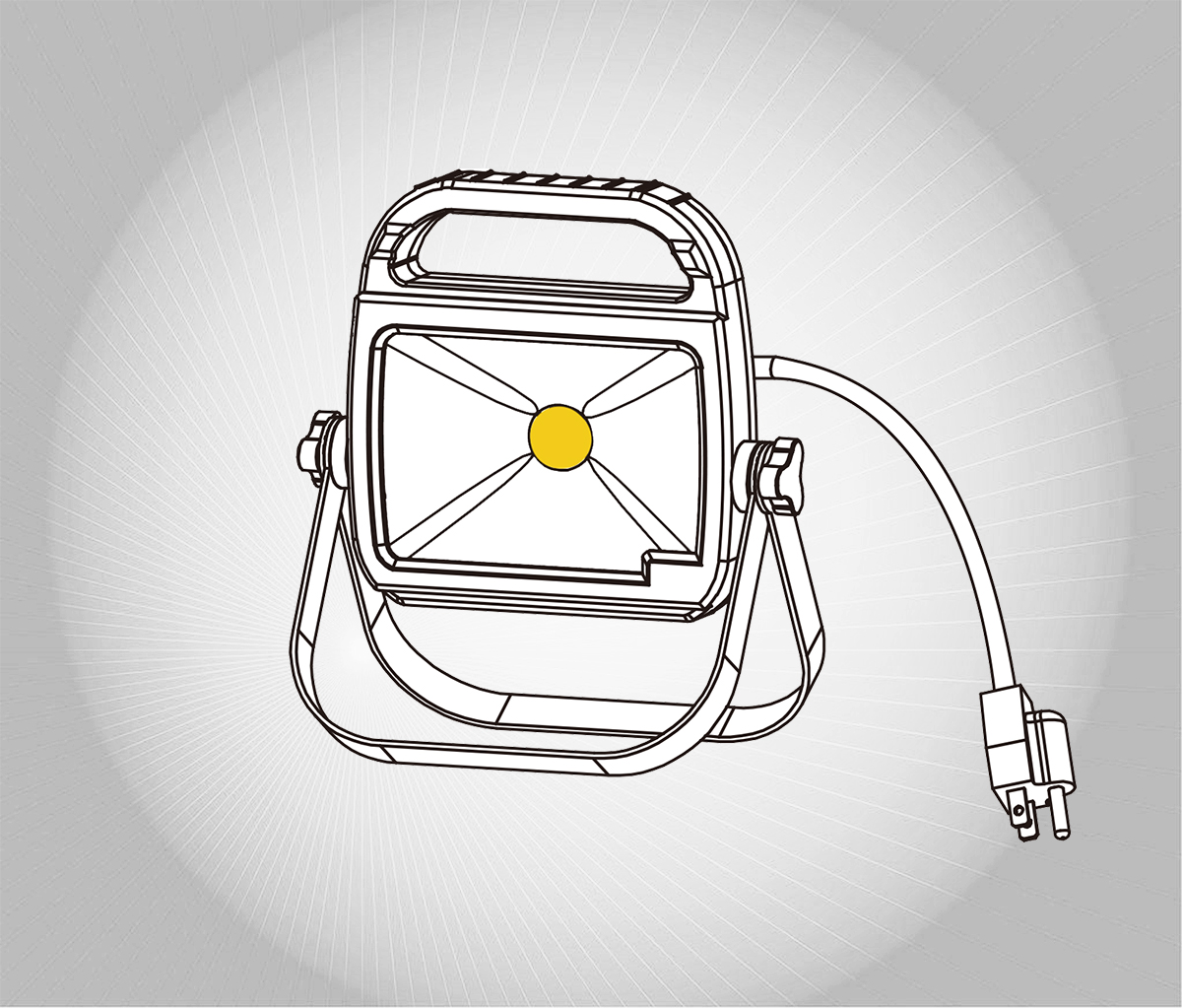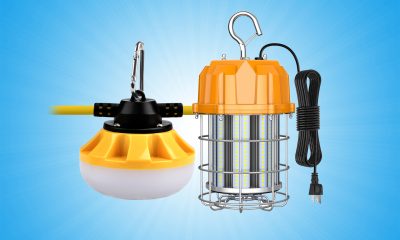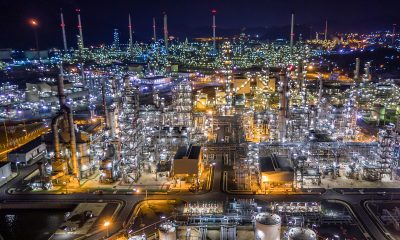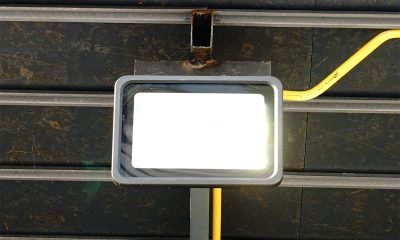Applications
An AC powered LED work light is a portable flood light that runs directly from a commercial alternating current (AC) power supply. Corded work lights are typically used in applications where fixed lighting is not available or provides inadequate illumination but AC line power is accessible. These portable lights provide the flexibility of transforming an unplanned corner inside a facility into a work zone, supplementing a building’s overhead lighting systems, and delivering temporary lighting outdoors. They are intended for use in garages, automobile repair shops, industrial facilities, building sites, warehouses and outdoor environments where utility power is available. Although their portability is compromised by AC line connection, corded work lights are able to deliver higher lumen packages than battery operated LED work lights while being more adaptive to worksite lighting needs than fixed overhead luminaires.
Design and construction
A portable work light is essentially an LED flood light with a floor stand, or with the ability to stand on its own or to attach to a metal surface with magnet fixings. The floor stand can be an H-stand, a folding stand, a sled base, or an adjustable handle. The adjustable handle or a dedicated carrying handle provides portability. Swiveling and/or pivoting adjustment allows the angle and direction of the beam to be aimed. LED work lights need to be tough enough to withstand the abuse of harsh working conditions and the rigors of the outdoor elements. High power systems typically have a rugged cast-aluminum enclosure and low power systems have a durable ABS construction. The LED module is protected by a scratch, impact and chemical resistant polycarbonate or tempered glass lens for superior resistance to mechanical impact and accidental drops. All exposed metal surfaces of an LED work light, including those of the housing, heat sink, stand and handle, are corrosion protected. These systems are sealed dust tight and protected from the effects of water jets or even water immersion.
Light source
AC powered LED flood lights are offered in a variety of wattages and beam angles. The light emitting surface (LES) is often formed by an array of mid-power SMD LEDs or a chip-on-board (COB) LED array. Mid-power SMD LEDs provide the highest efficacy lighting because the LED chips sit in a highly reflective cavity. However, these LEDs are vulnerable to thermal degradation because the reflective cavity is made from a resin with low thermal stability. Exposure of the package material to blue light and high temperatures eventually leads to accelerated lumen degradation and chromaticity shift. Mid-power SMD LEDs are therefore typically used in low cost systems or low output systems which generate a low thermal load. COB LEDs are fabricated using a large array of small LED dies mounted onto a metal-core printed circuit board (MCPCB) or a ceramic substrate. This package design allows them to deliver a high flux density and uniform light distribution. LED flood lights that need to produce a huge amount of lumens from a small LES may use ceramic-based high power LEDs or chip scale package (CSP) LEDs to address the operational challenges.
System integration
The discrete SMD LEDs are soldered mounted onto an MCPCB which is designed with a low thermal resistance for effective dissipation of the waste heat over the heat sink surface. COB LEDs are designed to be mounted directly on a heat sink. To facilitate thermal conduction between the PCB and heat sink a thermal interface material (TIM) is interposed between the two components. The heat sink should be designed with a sufficient capacity to absorb thermal energy generated by the LEDs. A sufficiently large surface area should be provided to convect that thermal energy into the surrounding ambient air. The heat sink is constructed from aluminum and may form as one piece with the housing to maximize surface area for convective cooling in high wattage systems. On the front end of the LED module sits secondary optics when the FWHM divergence angle of the LEDs needs to be narrowed. Luminous flux produced by the LEDs IS generally controlled by an optical reflector which can be implemented as a module-level component or a package-level array. The secondary optic can also be an opal polycarbonate lens which provides diffused light for improved visual comfort.
LED driver
To produce a stable and controllable amount of light, the LEDs are fed through a constant current LED driver. The LED driver converts AC line power to a DC voltage and current compatible with the LED load. Line and load regulation is typically accomplished using switched mode power supplies (SMPS) which have the fundamental advantages of higher efficiencies, higher surge immunity and wider operating voltages when compared to linear power supplies. A two-stage SMPS LED driver includes an active power factor correction (PFC) stage followed by a DC-DC converter stage.
Although the two-stage design contributes to higher system reliability, higher efficiency (in high wattage applications) and higher safety than the single-stage design, it necessitates the use of two independently controlled power switches and two control circuits (or “controllers”). The less complicated and expensive single-stage LED drivers are therefore more widely used in LED lighting applications, in particular in systems running at a wattage of less than 100W. In entry-level products, the LEDs may be driven with a linear power supply which has poor reliability and output quality but is cheap enough to justify its use. The LED driver may incorporate control functions such as dimmability which is utilized as a strategy to drive down energy usage.



















Loading...